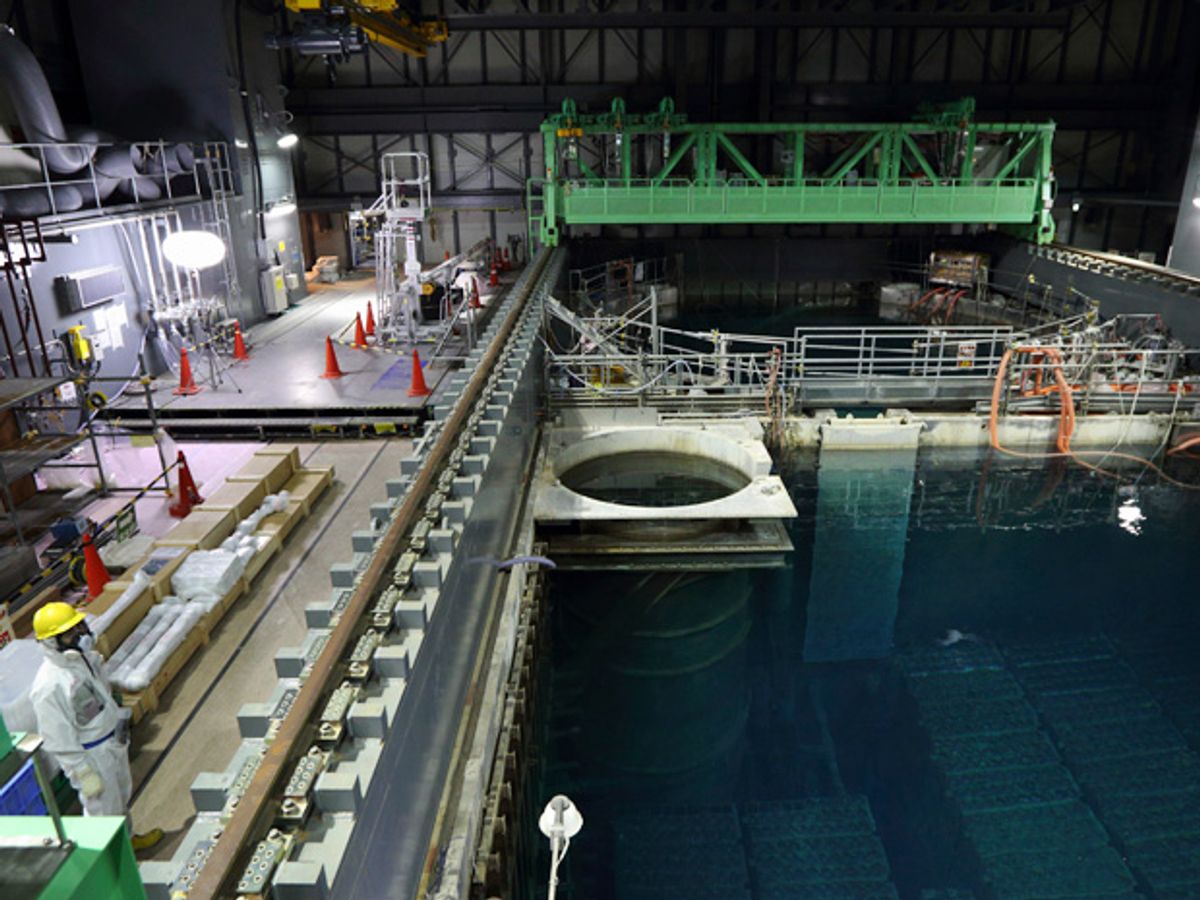At Japan's crippled Fukushima Daiichi nuclear power plant, engineers are preparing to take the first big step toward decommissioning the facility. In the next few weeks, operators will begin removing the spent fuel rods from the storage pools in the badly damaged reactor 4.
The Fukushima Daiichi plant was devastated in March 2011, when an earthquake and tsunami triggered a series of meltdowns and explosions at the plant. Reactor 4 was not in operation at the time of the accident; it was shut down for routine maintenance and refueling, which meant that its supply of fuel rods were in a storage pool on a top floor of the reactor building.
When an explosion shattered the reactor 4 building on 15 March, top nuclear officials in the United States and Japan worried that the pool had been structurally damaged, which would allow water to leak out and leave the fuel rods exposed and overheating. Since the spent fuel pools aren't sealed in heavy steel or concrete structures, such exposure would send large amount of radiation into the environment. The chairman of the US Nuclear Regulatory Commission, Gregory Jaczko, essentially caused an international incident when he stated on 16 March that reactor 4's spent fuel pool was empty of water. The public panicked until Japanese officials denied Jaczko's statements, and produced evidence that the pool was still full of water.
The reactor 4 spent fuel pool continued to be a hot topic, however, with some activists questioning its structural integrity and its ability to withstand any future earthquakes. Additionally, its cache of 1533 fuel units—the most held at any of Fukushima's reactor buildings—makes it a priority for decommissioning.
TEPCO, the utility that owns the Fukushima Daiichi plant, has been preparing for this first fuel rod removal for some time. Workers have already removed much of the debris from inside the pool, and Japan's Nuclear Regulatory Authority has been inspecting the site and assessing the removal plan. When the operation begins in the next week or two, workers will use a crane to lift up the fuel assemblies and place them in submerged casks. Those casks will then be removed from the pool and taken elsewhere for safer storage. The video below, from TEPCO, explains the process in more detail.
The operation is expected to be completed before the end of 2014. But that's just the first step in a decommissioning process that is expected to take 40 years. The spent fuel must be removed from the other reactor buildings before TEPCO can even being the process of locating and removing the active fuel in reactors 1, 2, and 3, all of which are thought to have suffered partial meltdowns.
Image: Tomohiro Ohsumi/AP Photo
Eliza Strickland is a senior editor at IEEE Spectrum, where she covers AI, biomedical engineering, and other topics. She holds a master’s degree in journalism from Columbia University.



